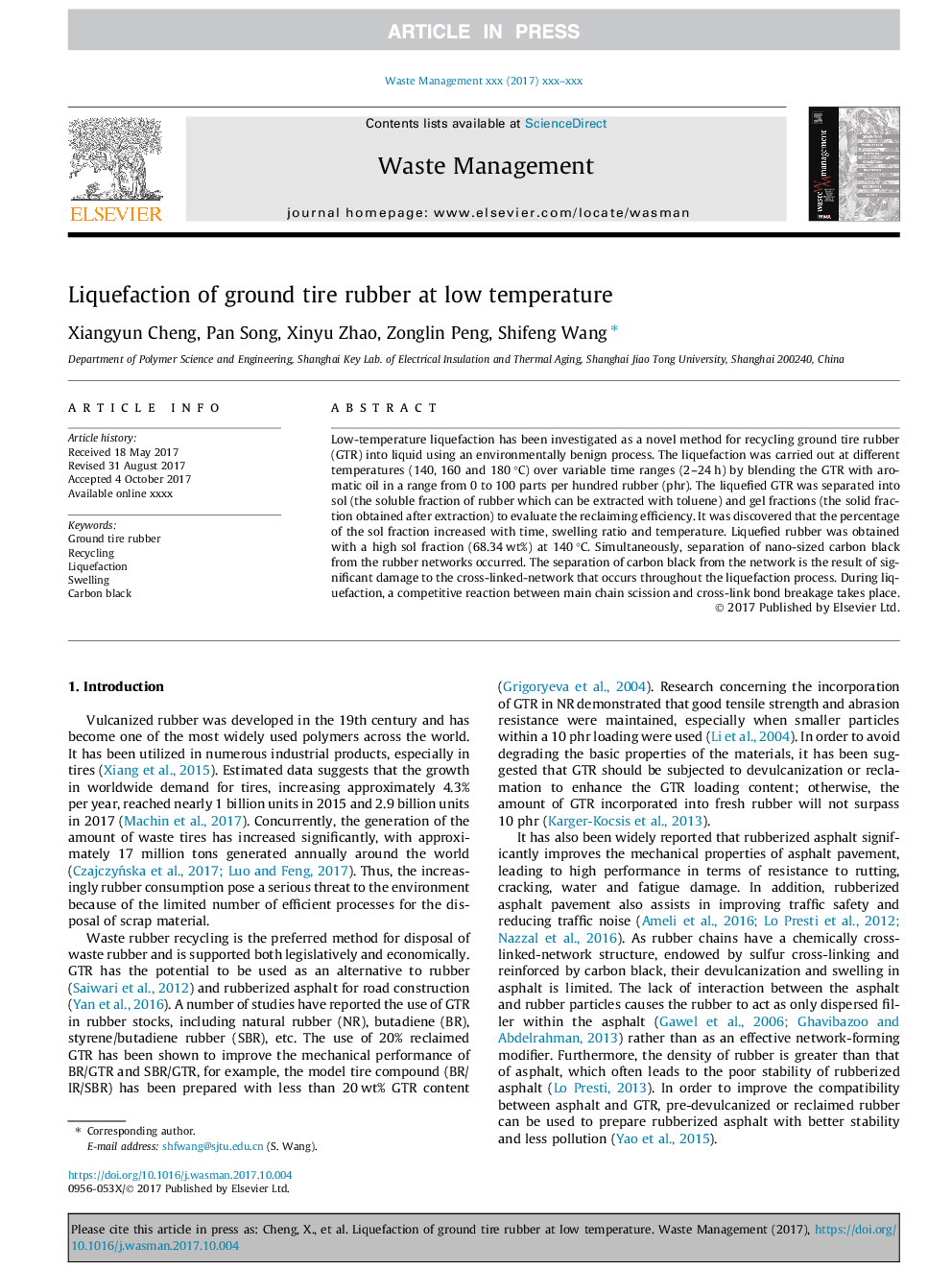| Article ID | Journal | Published Year | Pages | File Type |
|---|---|---|---|---|
| 8870240 | Waste Management | 2018 | 10 Pages |
Abstract
Low-temperature liquefaction has been investigated as a novel method for recycling ground tire rubber (GTR) into liquid using an environmentally benign process. The liquefaction was carried out at different temperatures (140, 160 and 180â¯Â°C) over variable time ranges (2-24â¯h) by blending the GTR with aromatic oil in a range from 0 to 100 parts per hundred rubber (phr). The liquefied GTR was separated into sol (the soluble fraction of rubber which can be extracted with toluene) and gel fractions (the solid fraction obtained after extraction) to evaluate the reclaiming efficiency. It was discovered that the percentage of the sol fraction increased with time, swelling ratio and temperature. Liquefied rubber was obtained with a high sol fraction (68.34â¯wt%) at 140â¯Â°C. Simultaneously, separation of nano-sized carbon black from the rubber networks occurred. The separation of carbon black from the network is the result of significant damage to the cross-linked-network that occurs throughout the liquefaction process. During liquefaction, a competitive reaction between main chain scission and cross-link bond breakage takes place.
Related Topics
Physical Sciences and Engineering
Earth and Planetary Sciences
Geotechnical Engineering and Engineering Geology
Authors
Xiangyun Cheng, Pan Song, Xinyu Zhao, Zonglin Peng, Shifeng Wang,
